Digital Camera World Verdict
If you use a light mirrorless camera and want a compact yet affordable motorized gimbal that’s easy to carry and has lots of features for not a lot of money, the DJI Ronin-SC is a great buy. It’s straightforward to set up once you get the hang of it, has different modes for different subjects and comes with a mini tripod so you can do timelapse, motion lapse and panoramas to add to the production values of your films. All controlled with an impressively easy-to-use app. For $279 / £325, it’s a bargain.
Pros
- +
Light weight
- +
Easy to get smooth results
- +
Affordable
Cons
- -
Limits on camera size
- -
Takes time to set up
- -
Built in battery can’t be changed
Why you can trust Digital Camera World
Despite the recent announcement of the updated DJI RSC 2, the DJI Ronin-SC is a superb buy for shooting smooth video footage with a mirrorless camera, or a small DSLR.
DJI has become the major force in the drone and gimbal market, pioneering new technology and making its products easier to use than the vast majority of its rivals. But many of these rival companies have countered by offering less advanced products but at lower price points. So DJI has hit back by taking its popular DJI Ronin S gimbal, then making a smaller, lighter and cheaper version to suit smaller cameras. At a price that shames its no-name rival brands you can buy online, making it one of the best gimbal stabilizers around.
The DJI Ronin-SC motorized gimbal stabilizer brings smooth, handheld, cinematic shots to filmmakers who use mirrorless cameras under 2kg. The larger Ronin S model can take double the payload, but weighs a lot more at 1860g and costs $629/£459 compared to the SC model at 1088g and $279 / £325.
As the Ronin-SC is designed for lighter cameras, the balancing system has been simplified. The roll axis balances automatically with the help of a smartphone app. And the pan, tilt and roll axes all include axis locks to keep things safe in transit. With a sliding quick release camera plate, the system makes it pretty quick to mount and balance the camera, ready for shooting. Just follow the instructions, or watch online tutorial videos, and it soon becomes easy and quick to do.
The basic kit comes with a smartphone mount that sits on the camera hotshoe, so you can fasten on your phone then change the settings and modes easily using the Ronin app. The app allows you to set three custom profiles, adjust the motors and run balance tests. There are also settings like Sport, which speeds up the response time and is ideal for following fast-moving subjects.
Specifications
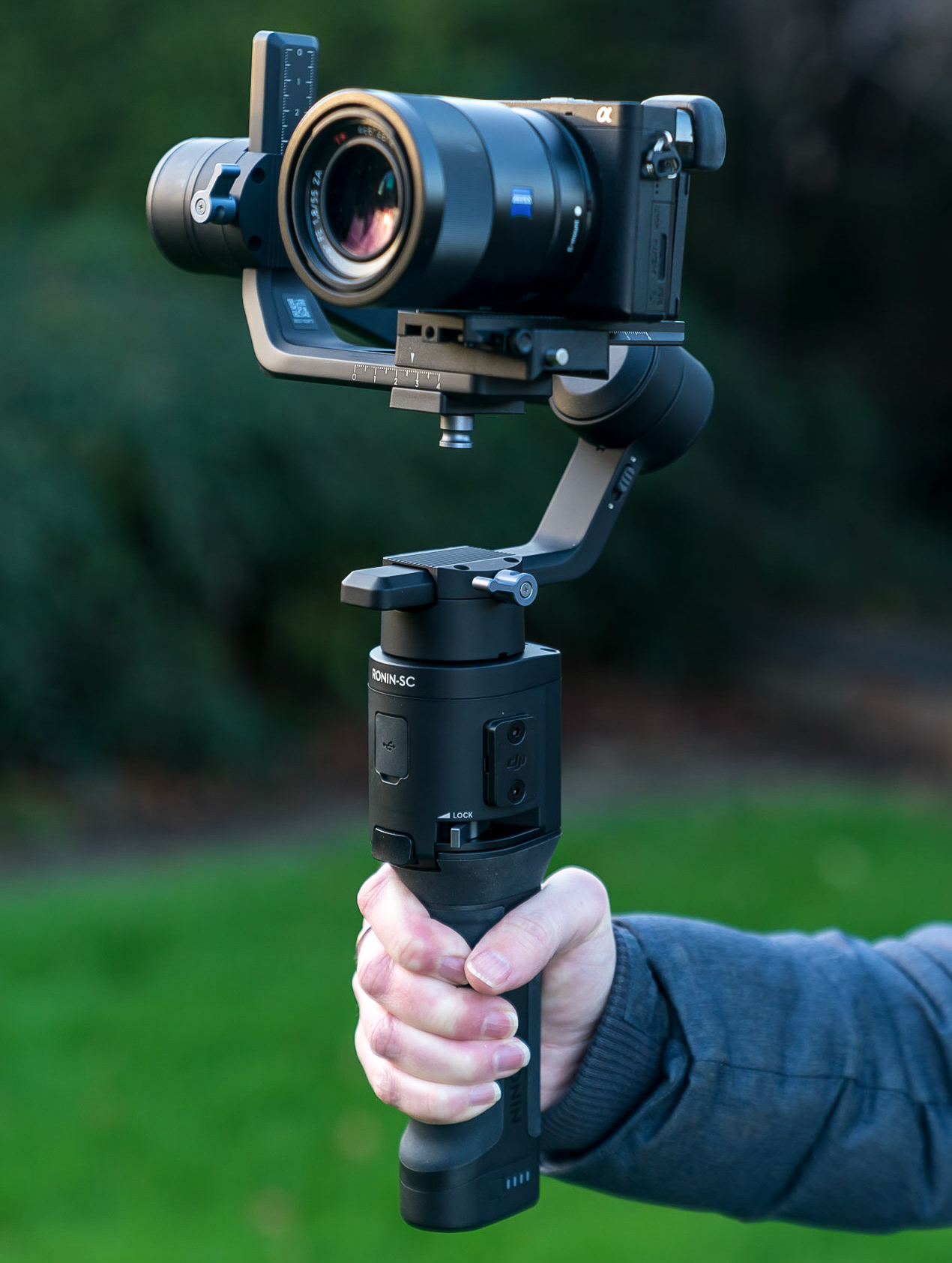
Type: Three-axis motorized gimbal
Payload: 2kg / 4.4lb
Battery life: 11 hours
Charging time: 2.5 hours
Connections: 1/4in and 3/8in mounting sockets, camera control port, accessory port, USB-C
Connectivity: Bluetooth 5.0, USB-C
Dimension (LxHxD): 370x165x150mm
Weight with grip: 1088g
Key features
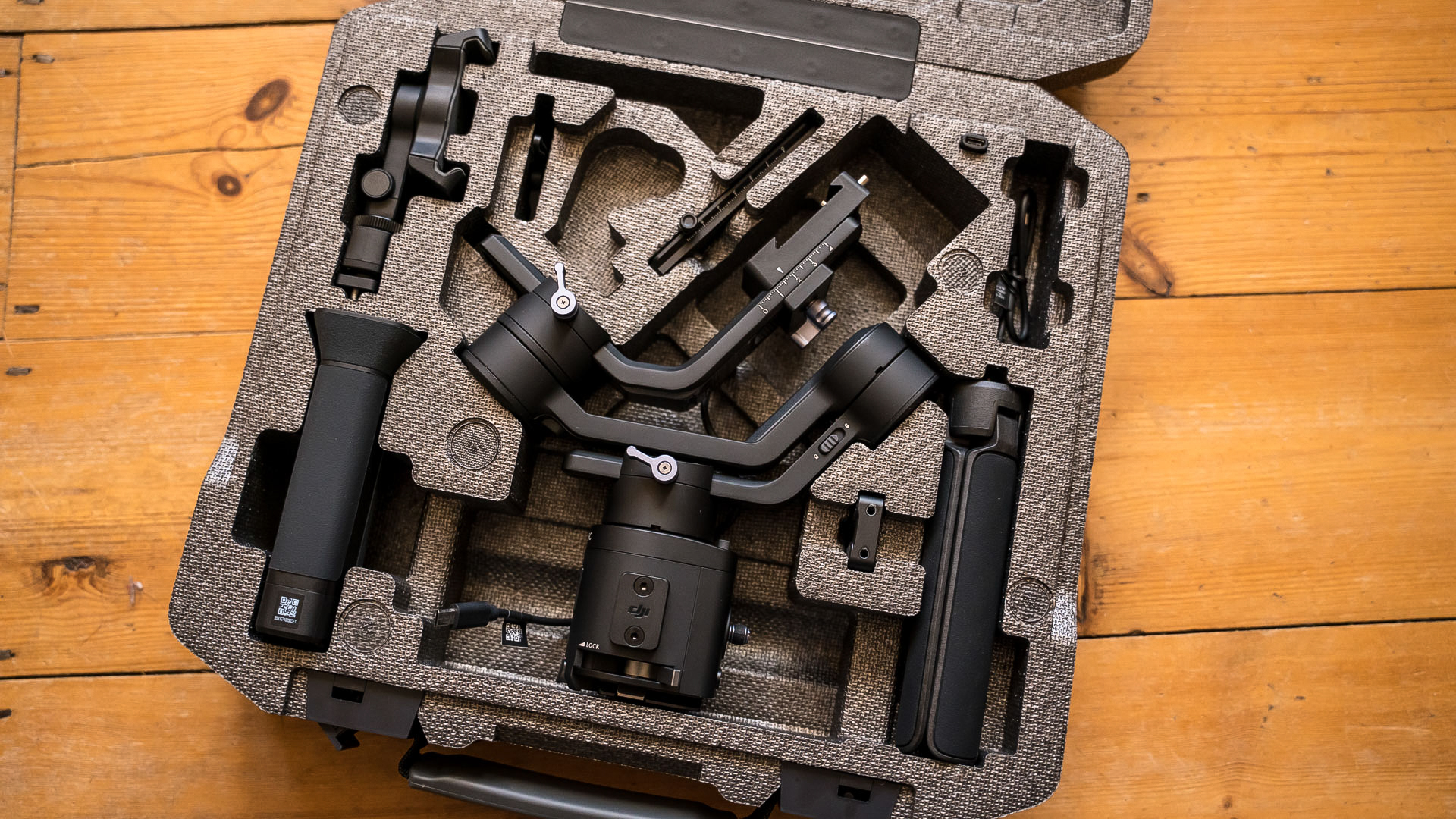
The Ronin-SC gimbal features pan, tilt, and roll control, as well as 360-degree panning to create 360-degree motion shots. There are settings for time lapse and motion lapse, too.
The SC also has all the modes from the S model such as Virtual Joystick, Timelapse, MotionLapse, Motion Control and Panorama.
There are also two brand new modes. ActiveTrack means you can tap on a subject on screen using the app, then the gimbal follows the subject automatically. Force Mobile means you can control the gimbal from your mobile at up to 25metres away, using just hand gestures. Both these modes are fun and work pretty well, but for more controlled filmmaking it’s better to use the normal controls.
Build and handling
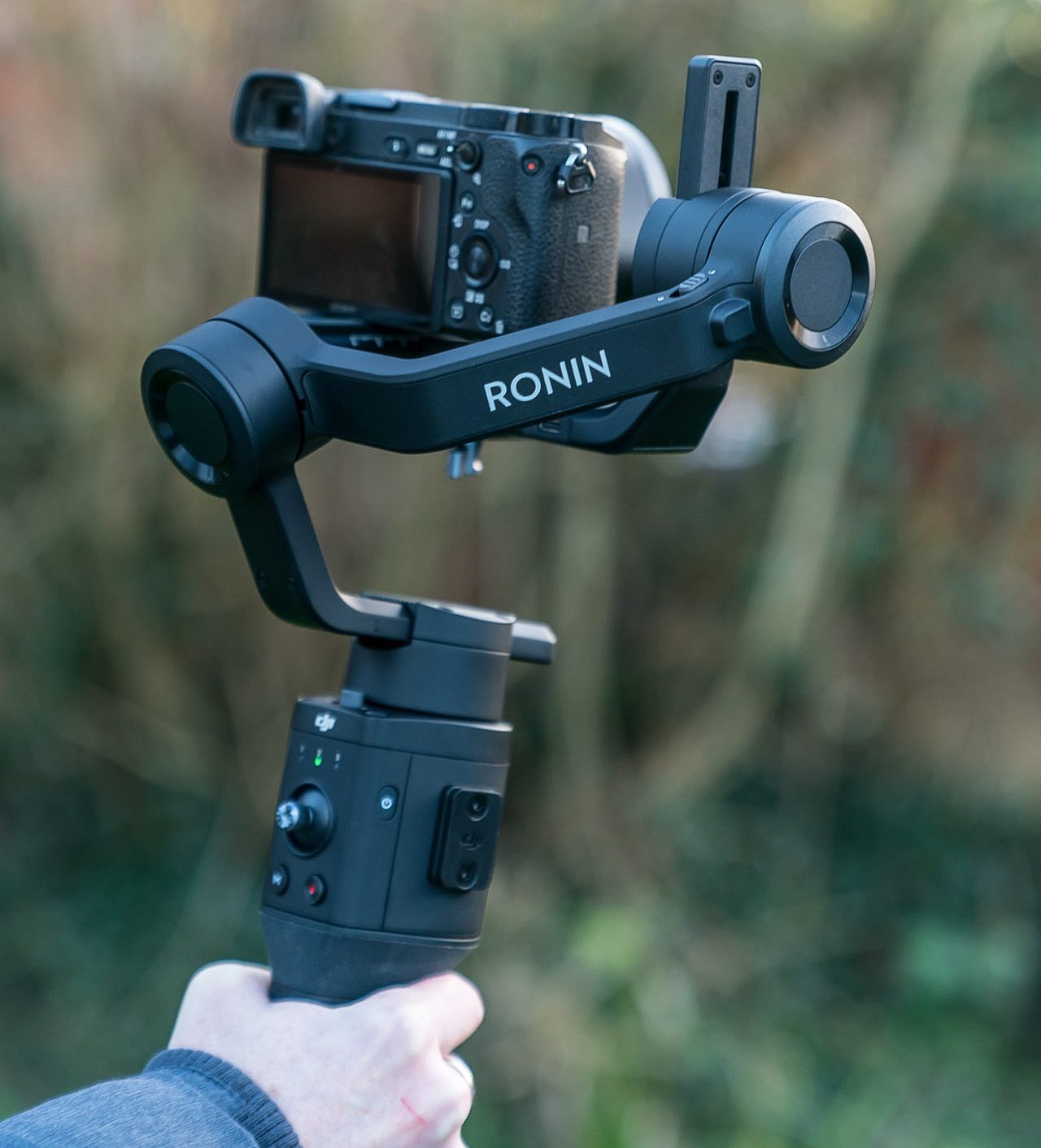
The unit doesn’t feel like a lower-end gimbal, as it’s solid and well built. It even comes in a lightweight case with all the cables and accessories you need.
The handle has a record button and a joystick for controlling the gimbal, as well as a button to bring the gimbal back to its default position. There is also a button to enter Sport mode.
The Ronin-SC is powered by a 2450mAh battery built into its handle, which lasts up to 11 hours and is charged via a USB Type-C port. This can also provide camera control such as run/stop or focus pulling using one of the included USB cables connected to a compatible camera. We tried it on Sony A7 series cameras and it was flawless. There are also 1/4"-20 and 3/8"-16 mounting threads on the handle to add accessories.
The Ronin-SC comes with an extended grip/tripod, camera riser, lens support, Allen key wrench, quick release plate with 1/4"-20 camera mounting screw and various USB control cables. Everything you need to get going.
In use, the lighter weight really does suit smaller cameras and the whole setup can be handheld with a single hand. The rear arm is angled so it doesn’t obstruct the view of your camera’s screen, unlike some rival products.
Performance
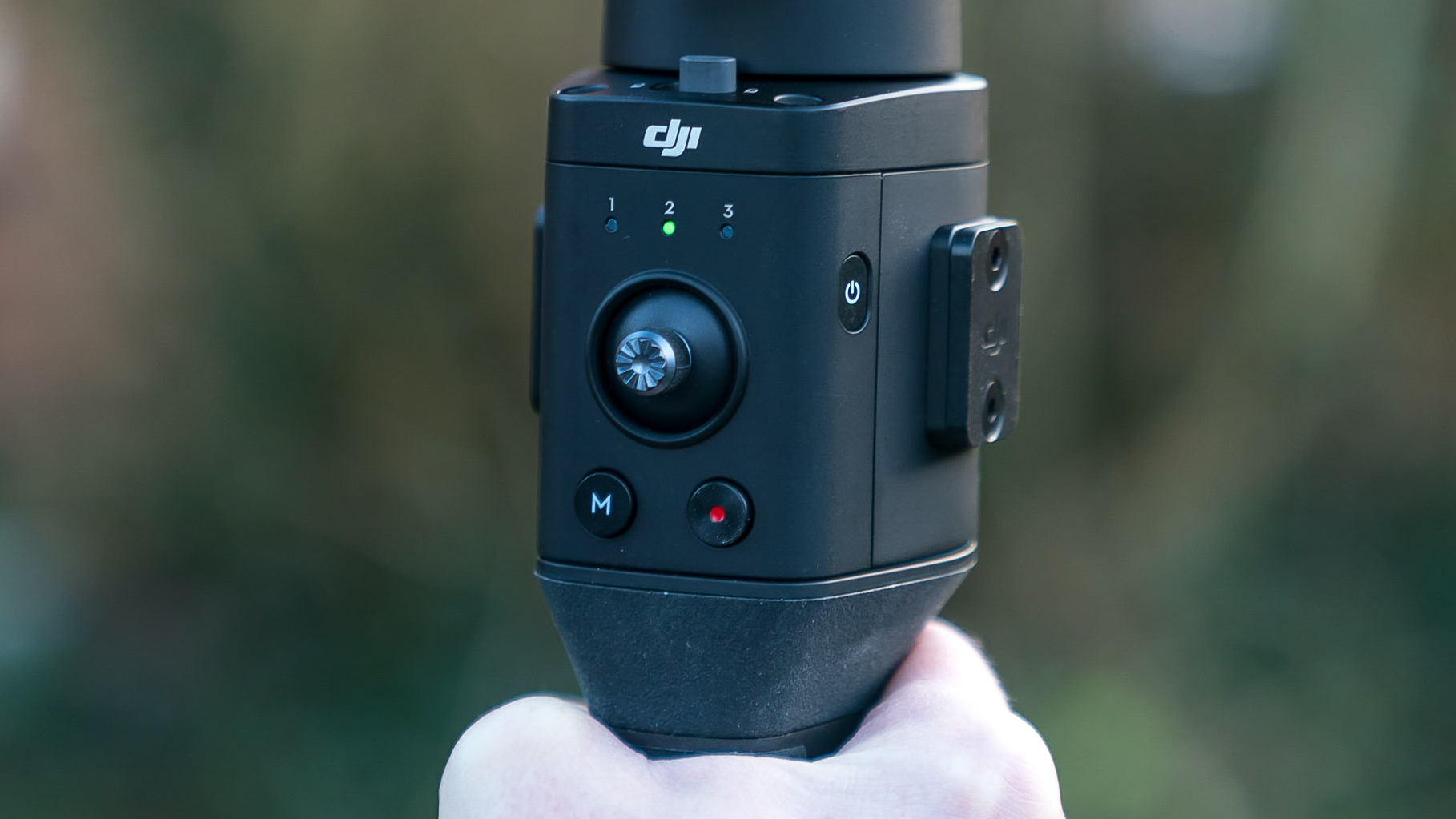
The lighter payload and less powerful gimbal motors means it is more important to get the balance of your camera and lens right, and it’s best used with a mirrorless camera and a small prime lens. If you want to use a Panasonic S1H and a fast f/2.8 zoom on it, it’s best to move up to bigger versions.
With the right camera and lens combo, it works very well. Handheld, even a beginner can get super-smooth shots. And with a bit of practice, you really can get the professional Steadicam look just like all the Hollywood movies.
Verdict
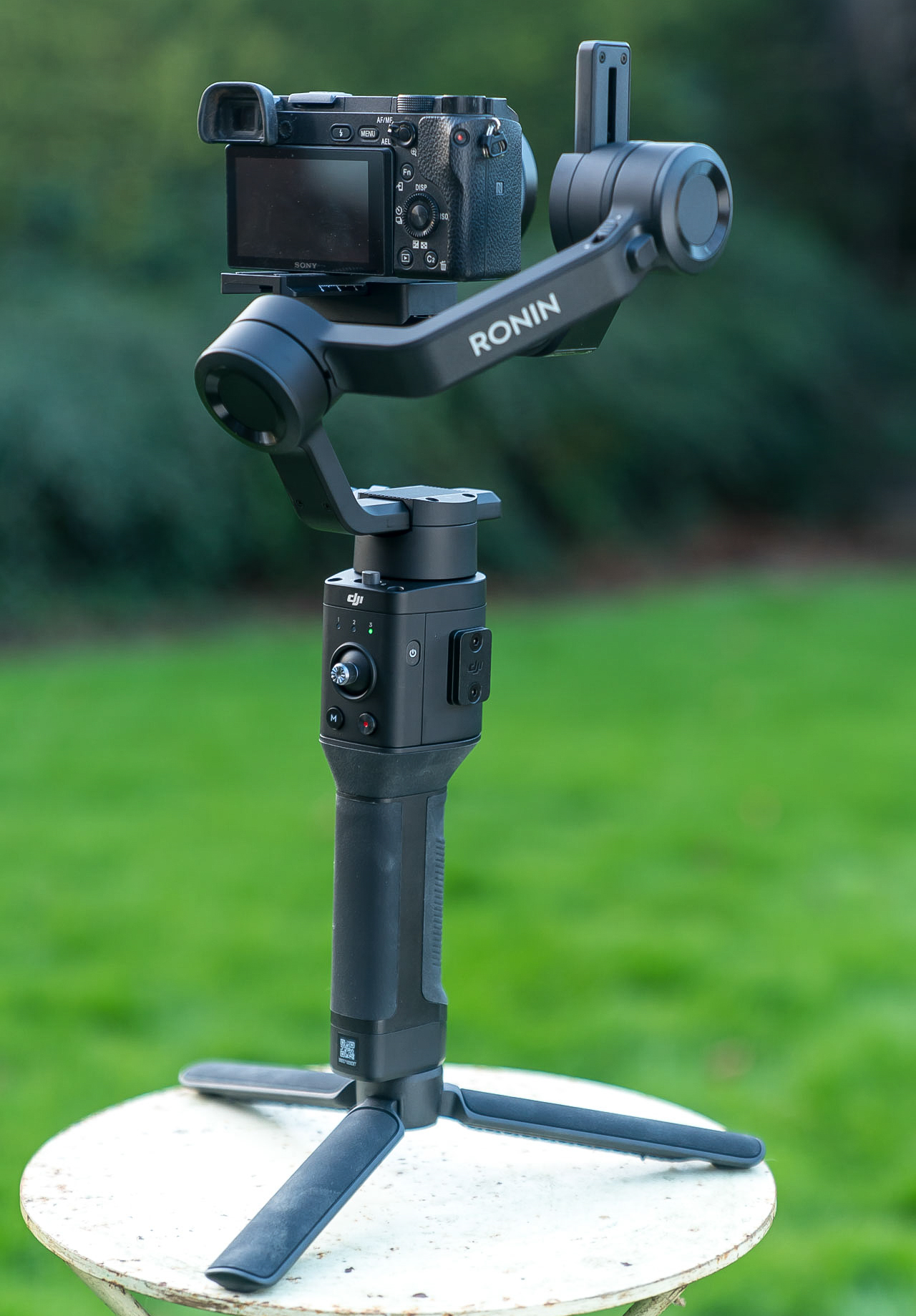
Nothing gives a more cinematic feel to your movies than smooth, steady shots and the Ronin-SC is a great way to get them without breaking the bank. There is a learning curve involved in not only setting it up but using the different modes effectively. It won’t instantly turn you into Quentin Tarantino.
With a gimbal like this, you can do underslung shots for low-level action, slider-type sideways shots for slow reveals and lots more. Including walking with the camera to track a moving subject. This is ideal if your camera has face detection to keep things sharp.
If you have a smaller mirrorless camera and a prime lens, it’s an ideal accessory. If you use a larger camera and want to use a zoom, it’s best to upgrade to a larger version.
Read more
Best video tripods
Best gimbal stabilizers
Best cameras for YouTube
Best cameras for vlogging
Best 4K cameras for filmmaking
Best camcorders
Best cinema cameras
Best camera for streaming
Best microphones for vlogging
Best camera sliders
Best on-camera monitors
Best LED light panels
Best reflectors
Best collapsible backdrops
Adam Duckworth is an award-winning professional photographer and videographer based in the UK. He has worked for many top magazines, newspapers and corporate clients for more than 25 years. He was named SWPP UK Commercial Photographer of the Year, and is an Associate of the British Institute of Professional Photography. He has also worked for international publications like Motor Cycle News, Racer X, The Sunday Times, The Guardian, ZOO, Golf World, Today's Golfer, and Mountain Bike Action, among others.



